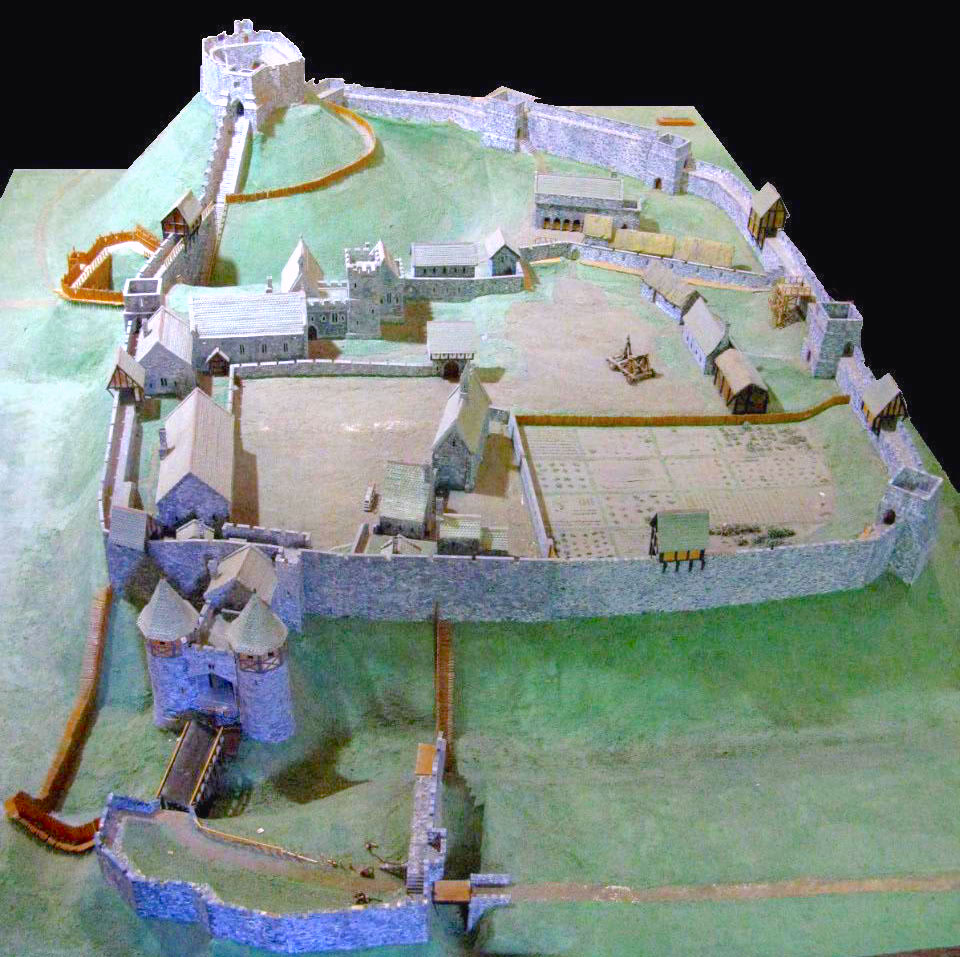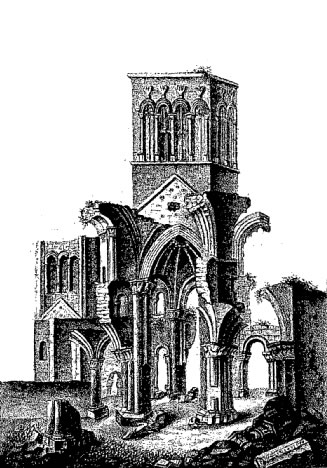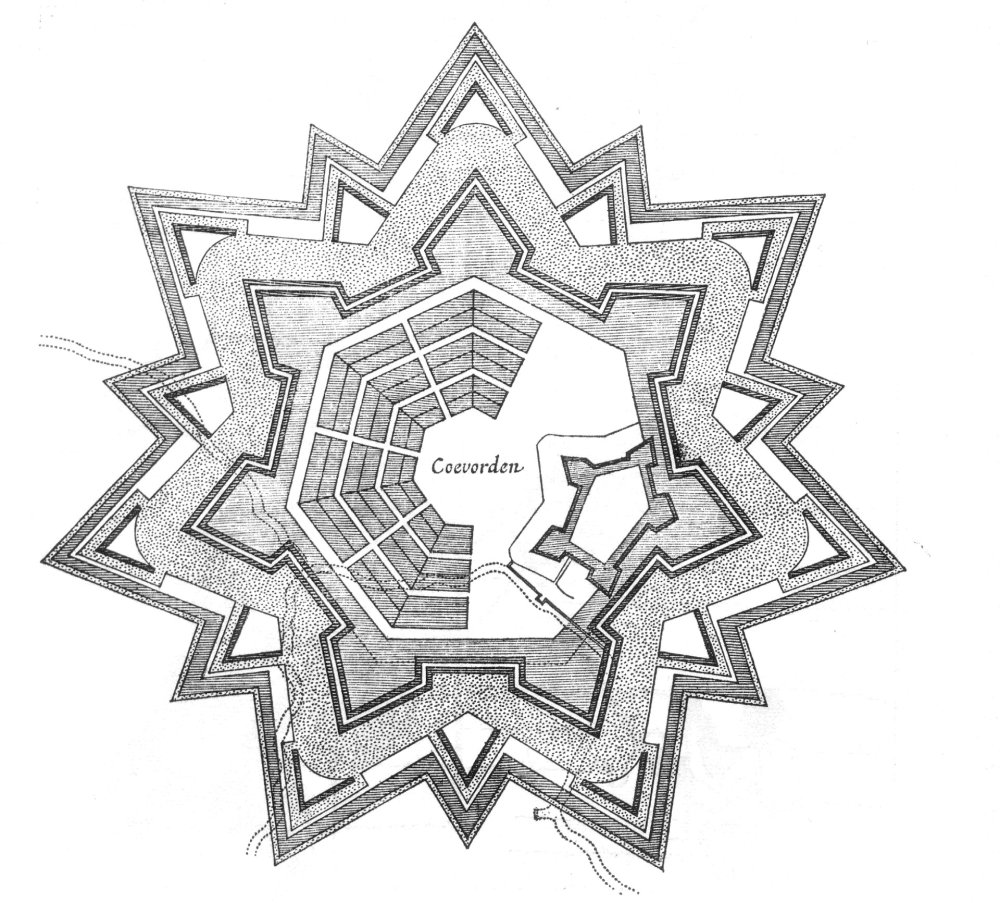|
Carisbrooke Castle
Carisbrooke Castle is a historic motte-and-bailey castle located in the village of Carisbrooke (near Newport), Isle of Wight, England. Charles I was imprisoned at the castle in the months prior to his trial. Early history The site of Carisbrooke Castle may have been occupied in pre-Roman times. A ruined wall suggests that there was a building there in late Roman times. The ''Anglo-Saxon Chronicle'' mentions that Wihtgar, cousin of King Cynric of Wessex, died in AD 544, and was buried there. The Jutes may have taken over the fort by the late 7th century. An Anglo-Saxon stronghold occupied the site during the 8th century. Around AD 1000, a wall was built around the hill as a defence against Viking raids. Later history From 1100 the castle remained in the possession of Richard de Redvers' family, and over the next two centuries his descendants improved the castle with stone walls, towers and a keep. In 1293, Countess Isabella de Fortibus, the last Redvers resident, sold the ... [...More Info...] [...Related Items...] OR: [Wikipedia] [Google] [Baidu] |
Carisbrooke
Carisbrooke is a village on the south-western outskirts of Newport, in the civil parish of Newport and Carisbrooke, Isle of Wight, England. It is best known as the site of Carisbrooke Castle. It also has a medieval parish church, St Mary's Church (overlooking the High Street, with views to the castle), which began as part of a Benedictine priory established by French monks c. 1150. The priory was dissolved by King Henry V of England in 1415, during the Hundred Years' War. In 1907, the church was restored. It has a 14th-century tower rising in five stages with a turret at one corner and a battlemented and pinnacled crown. A Roman Villa was discovered in the Victorian era on the site of the old vicarage. Name The village's present name first appears as "Caresbroc" in 1114, and its meaning is uncertain. It may pertain to a lost Celtic river-name for Lukely Brook on which it stands, or possibly the rock on which the castle is built, to which the generic Old English form of brook, ... [...More Info...] [...Related Items...] OR: [Wikipedia] [Google] [Baidu] |
Richard De Redvers
Richard de Vernon seigneur de Redvers (or Reviers, Rivers, or Latinised to ''de Ripariis'' ("from the river-banks")) ( 1066 – 8 September 1107), 1st feudal baron of Plympton in Devon, was His origins are obscure, but after acting as one of the principal supporters of Henry I in his struggle against his brother Robert Curthose for control of the English throne, de Redvers was rewarded with estates that made him one of the richest magnates in the country. He was once thought to have been created the first Earl of Devon, but this theory is now discounted in favour of his son Baldwin. Life to 1100 Little is known for certain of the Redvers family before Richard. In his ''Baronage of England'' (1675–6), William Dugdale wrongly identified Richard de Redvers with Richard the son of Baldwin FitzGilbert (also known as Baldwin de Meules) who was sheriff of Devon under William the Conqueror. This error was still being repeated in the late 19th century. In around 1890 ''The ... [...More Info...] [...Related Items...] OR: [Wikipedia] [Google] [Baidu] |
Trace Italienne
A bastion fort or ''trace italienne'' (a phrase derived from non-standard French, meaning 'Italian outline') is a fortification in a style developed during the early modern period in response to the ascendancy of gunpowder weapons such as cannon, which rendered earlier medieval approaches to fortification obsolete. It appeared in the mid-fifteenth century in Italy. Some types, especially when combined with ravelins and other outworks, resembled the related star fort of the same era. The design of the fort is normally a polygon with bastions at the corners of the walls. These outcroppings eliminated protected blind spots, called "dead zones", and allowed fire along the curtain wall (fortification), curtain wall from positions protected from direct fire. Many bastion forts also feature Cavalier (fortification), cavaliers, which are raised secondary structures based entirely inside the primary structure. Origins Their predecessors, Medieval fortification, medieval fortress ... [...More Info...] [...Related Items...] OR: [Wikipedia] [Google] [Baidu] |
Federigo Giambelli
Federigo Giambelli (or Gianibelli; also given as Genebelli or Genibelli in contemporary English texts), was an Italian military and civil engineer who worked in Spain, the Spanish Netherlands and England in the late 16th and early 17th centuries. Early life and Spanish service Giambelli was born at Mantua about the middle of the 16th century. Having had some experience as a military engineer in Italy, he went to Spain to offer his services to Philip II. However, his proposals were given a lukewarm reception, and as he could obtain no immediate employment from the king, he moved to Antwerp, where he soon gained considerable reputation for his knowledge in various departments of science. He is said to have married while living there. The Siege of Antwerp Giambelli is said to have sworn vengeance for his rebuff at the Spanish court; and when Antwerp was besieged by Alexander Farnese, Duke of Parma in 1584, he offered his services to Elizabeth I of England, who, having satisfied he ... [...More Info...] [...Related Items...] OR: [Wikipedia] [Google] [Baidu] |
List Of Governors Of The Isle Of Wight
Below is a list of those who have held the office of Governor of the Isle of Wight in England. Lord Mottistone was the last lord lieutenant to hold the title governor, from 1992 to 1995; since then there has been no governor appointed. Governors of the Isle of Wight *1509–1520: Sir Nicholas Wadham (1472-1542) of Merryfield and Edge, "Captain of the Isle of Wight". *1520–1538: Sir James Worsley *1538–1540: Thomas Cromwell, 1st Baron Cromwell (later Earl of Essex) *1540–1553: Richard Worsley *1553–1558: Sir William Girling *1558–1560: William Paulet, 1st Marquess of Winchester *1560–1565: Richard Worsley (reappointed) *1565–1583: Sir Edward Horsey *1583–1603: George Carey, 2nd Baron Hunsdon *1603–1624: Henry Wriothesley, 3rd Earl of Southampton *1633–1642: Jerome Weston, 2nd Earl of Portland *1642–1647: Philip Herbert, 4th Earl of Pembroke *1647–1647: Robert Hammond *1648–1659: William Sydenham *1660: Anthony Ashley Cooper, 1st Earl of Sh ... [...More Info...] [...Related Items...] OR: [Wikipedia] [Google] [Baidu] |
Sir George Carey
George Carey, 2nd Baron Hunsdon (1547 – 9 September 1603) was the eldest son of Henry Carey, 1st Baron Hunsdon and Anne Morgan. His father was first cousin to Elizabeth I of England. In 1560, at the age of 13, George matriculated at Trinity College, Cambridge. Military and political career In December 1566 he accompanied the Earl of Bedford on an official mission to Scotland, to attend the baptism of the future King James. Mary, Queen of Scots gave him a ring and a chain with her miniature portrait. George was sent by his father to see Mary, Queen of Scots, at Bolton Castle in August 1568. They discussed border issues connected with Lord Hunsdon's wardenry. Mary believed that her enemies made false reports against her supporters in the Scottish Borders, hoping the English authorities would make reprisals. During the Northern Rebellion of 1569, George was knighted in the field by Thomas Radcliffe 3rd Earl of Sussex for bravery. George had challenged Lord Fleming, the com ... [...More Info...] [...Related Items...] OR: [Wikipedia] [Google] [Baidu] |
Spanish Armada
The Spanish Armada (often known as Invincible Armada, or the Enterprise of England, ) was a Spanish fleet that sailed from Lisbon in late May 1588, commanded by Alonso de Guzmán, Duke of Medina Sidonia, an aristocrat without previous naval experience appointed by Philip II of Spain. His orders were to sail up the English Channel, join with the Duke of Parma in Flanders, and escort an invasion force that would land in England and overthrow Elizabeth I. Its purpose was to reinstate Catholicism in England, end support for the Dutch Republic, and prevent attacks by English and Dutch privateers against Spanish interests in the Americas. The Spanish were opposed by an English fleet based in Plymouth. Faster and more manoeuvrable than the larger Spanish galleons, its ships were able to attack the Armada as it sailed up the Channel. Several subordinates advised Medina Sidonia to anchor in the Solent and occupy the Isle of Wight, but he refused to deviate from his instructions to ... [...More Info...] [...Related Items...] OR: [Wikipedia] [Google] [Baidu] |
Elizabeth I Of England
Elizabeth I (7 September 153324 March 1603) was Queen of England and Ireland from 17 November 1558 until her death in 1603. She was the last and longest reigning monarch of the House of Tudor. Her eventful reign, and its effect on history and culture, gave name to the Elizabethan era. Elizabeth was the only surviving child of Henry VIII and his second wife, Anne Boleyn. When Elizabeth was two years old, her parents' marriage was annulled, her mother was executed, and Elizabeth was declared illegitimate. Henry restored her to the line of succession when she was 10. After Henry's death in 1547, Elizabeth's younger half-brother Edward VI ruled until his own death in 1553, bequeathing the crown to a Protestant cousin, Lady Jane Grey, and ignoring the claims of his two half-sisters, Mary and Elizabeth, despite statutes to the contrary. Edward's will was quickly set aside and the Catholic Mary became queen, deposing Jane. During Mary's reign, Elizabeth was imprisoned fo ... [...More Info...] [...Related Items...] OR: [Wikipedia] [Google] [Baidu] |
Henry I Of England
Henry I ( – 1 December 1135), also known as Henry Beauclerc, was King of England from 1100 to his death in 1135. He was the fourth son of William the Conqueror and was educated in Latin and the liberal arts. On William's death in 1087, Henry's elder brothers Robert Curthose and William Rufus inherited Duchy of Normandy, Normandy and England, respectively; Henry was left landless. He purchased the County of Cotentin in western Normandy from Robert, but his brothers deposed him in 1091. He gradually rebuilt his power base in the Cotentin and allied himself with William Rufus against Robert. Present in England with his brother William when William died in a hunting accident, Henry seized the English throne, promising at his coronation to correct many of William's less popular policies. He married Matilda of Scotland and they had two surviving children, Empress Matilda and William Adelin; he also had many illegitimate children by his numerous mistresses. Robert, who invaded from ... [...More Info...] [...Related Items...] OR: [Wikipedia] [Google] [Baidu] |
Edward Woodville
Sir Edward Woodville (died 1488) was a member of the Woodville family during the Wars of the Roses. He survived the reign of Richard III in which several of his relatives were executed in a power struggle after the death of his brother-in-law Edward IV. Exiled with Henry Tudor, he participated in Henry's capture of the throne. Henry subsequently married Woodville's niece, Elizabeth of York. Under Henry VII, Woodville was appointed Lord of the Isle of Wight, the last person to be given that title. An enthusiastic soldier, he has been called "the last knight errant" because of his devotion to the chivalrous ideal.Wilkins, Christopher, ''The Last Knight Errant: Edward Woodville and the Age of Chivalry'', IB Tauris, 2009. Involved in many military adventures, he was finally killed in an ill-fated personal expedition to Brittany in support of Francis II, Duke of Brittany. Woodville was referred to as Lord Scales after the death of his brother Anthony Woodville, 2nd Earl Rivers, wh ... [...More Info...] [...Related Items...] OR: [Wikipedia] [Google] [Baidu] |
Richard III
Richard III (2 October 1452 – 22 August 1485) was King of England from 26 June 1483 until his death in 1485. He was the last king of the Plantagenet dynasty and its cadet branch the House of York. His defeat and death at the Battle of Bosworth Field marked the end of the Middle Ages in England. Richard was created Duke of Gloucester in 1461 after the accession to the throne of his older brother Edward IV. This was during the period known as the Wars of the Roses, an era when two branches of the royal family contested the throne; Edward and Richard were Yorkists, and their side of the family faced off against their House of Lancaster, Lancastrian cousins. In 1472, Richard married Anne Neville, daughter of Richard Neville, 16th Earl of Warwick, and widow of Edward of Westminster, son of Henry VI of England, Henry VI. He governed northern England during Edward's reign, and played a role in the English invasion of Scotland (1482), invasion of Scotland in 1482. When Edward IV died ... [...More Info...] [...Related Items...] OR: [Wikipedia] [Google] [Baidu] |
Anthony Woodville, 2nd Earl Rivers
Anthony Woodville, 2nd Earl Rivers (c. 144025 June 1483), was an English nobleman, courtier, bibliophile and writer. He was the brother of Queen Elizabeth Woodville who married King Edward IV. He was one of the leading members of the Woodville family, which came to prominence during the reign of King Edward IV. After Edward's death, he was arrested and then executed by the Duke of Gloucester (the future King Richard III) as part of a power struggle between Richard and the Woodvilles. His English translation of '' The Dictes and Sayings of the Philosophers'' is one of the first books printed in England. This presents a detailed biography. Origins He was the eldest son to survive childhood of Richard Woodville, 1st Earl Rivers, by his wife Jacquetta of Luxembourg. His sister was Elizabeth Woodville, who married King Edward IV and became queen. Career Like his father, he was originally a Lancastrian, fighting on that side at the Battle of Towton, but later became a Yorki ... [...More Info...] [...Related Items...] OR: [Wikipedia] [Google] [Baidu] |







